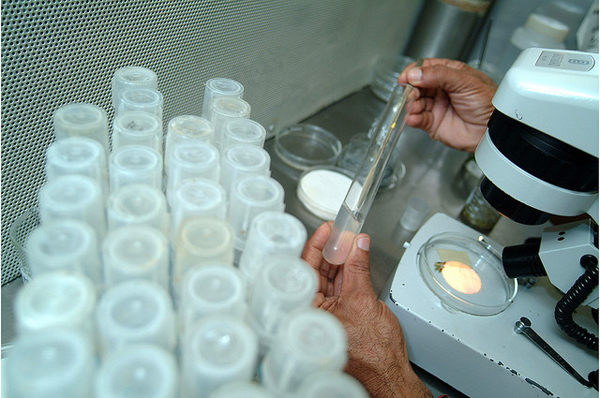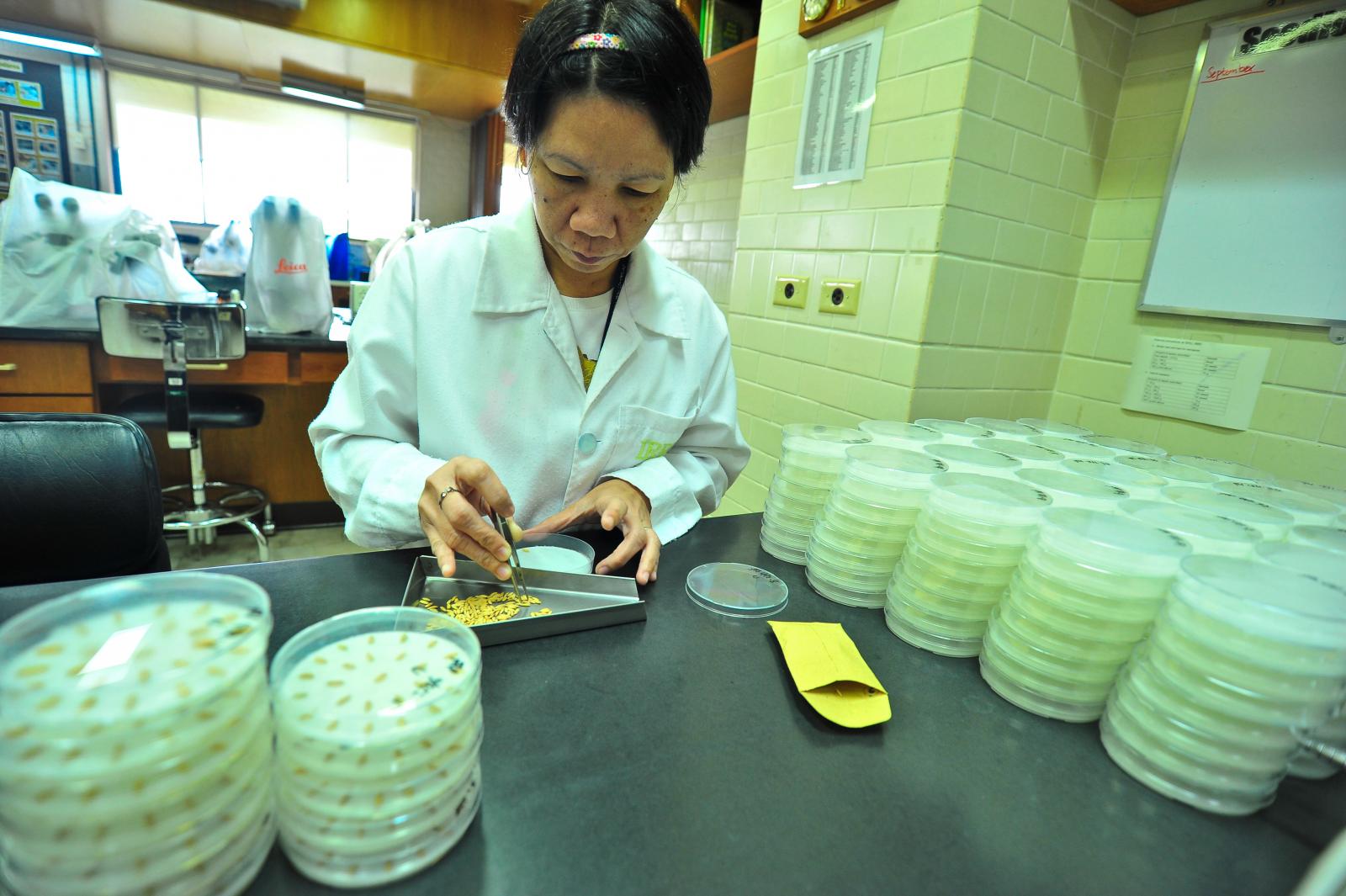Modern rice breeding
The success of modern rice breeding depends on the appropriate generation and interpretation of quantitative data. To implement this effectively, we employ a state of the art breeding data management system (B4R), which in collaboration with other global breeding informatics teams (such as Genomics Open-source breeding informatics initiative) is capable of managing genotype, phenotype, and pedigree data in a way that allows for powerful statistical analysis of breeding data.

To feed data into the breeding data management system, phenotypic information is collected across regional partners targeting similar environments to form breeding networks that collectively evaluate germplasm and identify the lines with the highest breeding value to be used as parents for the next breeding cycle. Breeding networks can also facilitate the exchange of germplasm among breeding programs, which can potentially speed up the development of new varieties while increasing genetic diversity.
An integrated breeding platform with rice-specific marker applications and decision tools
IRIS content is greatly improved through quality checks, reorganization of existing data sets, and uploading of well-curated historical data sets. Efficient analytical pipelines predict breeding value (genetic merit) using pedigree, marker, and phenotypic data. A suite of decision support tools assist in the design of efficient marker-/ genomics-assisted breeding strategies, including efficient genotyping platforms for SNPs that are diagnostic for important traits, and high quality genome-wide assays that enable genomic prediction. SNP markers for key traits will be validated, optimized, and made available for deployment in breeding programs.

Multienvironment Testing (MET) and International Germplasm Evaluation (INGER)
The new MET system will be a systematic and multistage testing scheme for promising breeding lines developed by GRiSP/RICE CRP breeding programs. MET will involve public- and private-sector partners at the key locations. This will allow for products to be channeled quickly into the right target environments and markets, while generating valuable feedback from farmers, millers, consumers, and other stakeholders in the public, private, and NGO sector.
Through INGER, NARES can exchange superior materials among themselves for release directly to farmers. Or they could use these in hybridization. In Africa, INGER will be embedded in the Africa Rice Breeding Task Force. This task force aims to regroup scarce human resources devoted to rice breeding in Africa in order to achieve higher rice productivity through (1) the identification of high performing, agronomically superior varieties that respond to farmers’ needs and consumers’ preferences in well-characterized target populations of environments; (2) establishment of a regional rice variety testing network using extensive METs.; (3) development of accelerated and regionally accepted varietal release procedures; and (4) development of alternative and effective models for seed production systems.

